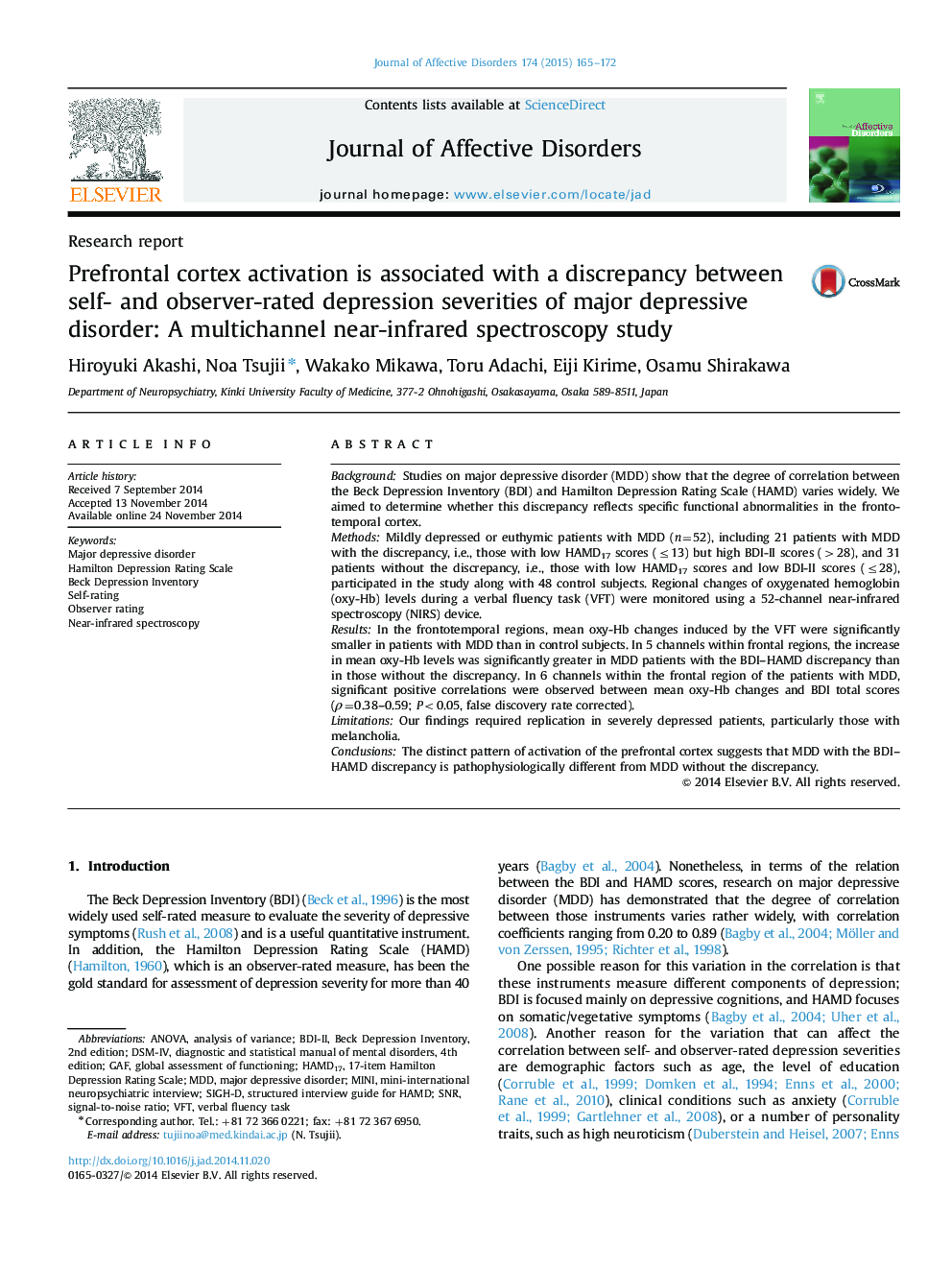| Article ID | Journal | Published Year | Pages | File Type |
|---|---|---|---|---|
| 6231655 | Journal of Affective Disorders | 2015 | 8 Pages |
BackgroundStudies on major depressive disorder (MDD) show that the degree of correlation between the Beck Depression Inventory (BDI) and Hamilton Depression Rating Scale (HAMD) varies widely. We aimed to determine whether this discrepancy reflects specific functional abnormalities in the frontotemporal cortex.MethodsMildly depressed or euthymic patients with MDD (n=52), including 21 patients with MDD with the discrepancy, i.e., those with low HAMD17 scores (â¤13) but high BDI-II scores (>28), and 31 patients without the discrepancy, i.e., those with low HAMD17 scores and low BDI-II scores (â¤28), participated in the study along with 48 control subjects. Regional changes of oxygenated hemoglobin (oxy-Hb) levels during a verbal fluency task (VFT) were monitored using a 52-channel near-infrared spectroscopy (NIRS) device.ResultsIn the frontotemporal regions, mean oxy-Hb changes induced by the VFT were significantly smaller in patients with MDD than in control subjects. In 5 channels within frontal regions, the increase in mean oxy-Hb levels was significantly greater in MDD patients with the BDI-HAMD discrepancy than in those without the discrepancy. In 6 channels within the frontal region of the patients with MDD, significant positive correlations were observed between mean oxy-Hb changes and BDI total scores (Ï=0.38-0.59; P<0.05, false discovery rate corrected).LimitationsOur findings required replication in severely depressed patients, particularly those with melancholia.ConclusionsThe distinct pattern of activation of the prefrontal cortex suggests that MDD with the BDI-HAMD discrepancy is pathophysiologically different from MDD without the discrepancy.
